| Travel / Travel Journal |
Greece Travel Journal
VERONICA CONSTANTINESCU
2006: On a September Tuesday afternoon, ready to start the adventure, I was loading my baggage into a motor coach. The bus was going to take me to Greece, to a coastal area with sandy beaches.
Here is, for short, the itinerary I've followed:
Wednesday morning, around 8 o'clock: Welcome at Greek custom house.
Midday: The first objective on our trip is going to be visited right now. It's Olympus, the sacred mountain, seat of the gods of Greek mythology.
From the bus's end point, where we stopped, it's a great landscape. East of the mountain lies Litochoro, "The City of Gods".
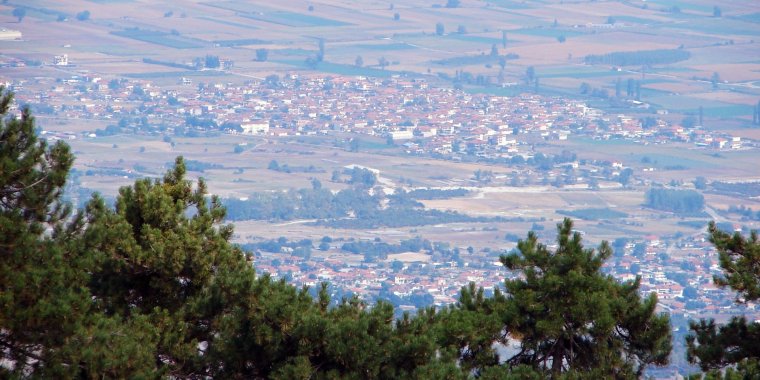
Litochoro, Greece.
The town is very popular for those wishing to practice mountain climbing. The uniformity of the red-clay tile roofs on white villas and the blue sea bring me peace and serenity. While the sun is spreading the fog, we are able to see a flight demonstration with paraglide.
With the few persons suffering from height sick full recovered, we are going forward, to the Monastery of Agios Dionyssios.
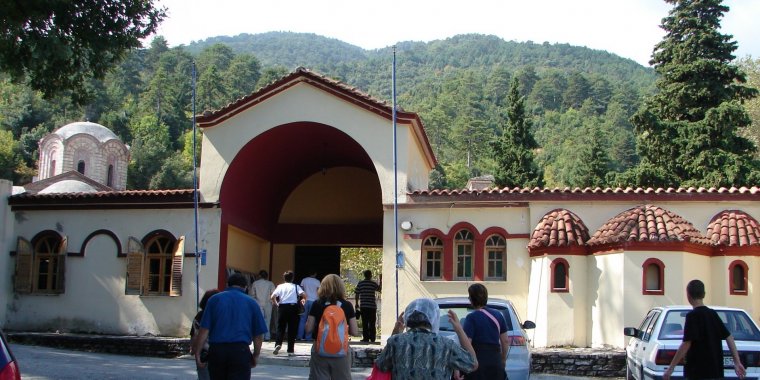
The Gate of Agios Dionyssios' Monastery, Olympus, Greece.
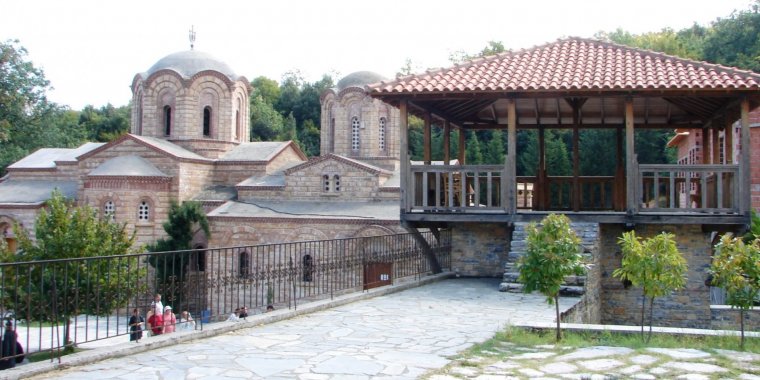
The Monastery of Agios Dionyssios, Olympus, Greece.
Situated at 18 km from Litochoro, at an altitude of 900 m, the monastery has a religious museum and relics from many saints.
With Platamona's castle guarding us, we are now able to see a view of the city where we have the accommodation.
This is the place where we are going to stay for six nights!
Here, in Nei Pori, the streets divide into lots the residences. There are 2-3 seaside resorts with three levels maximum on one common street. Decorative trees, like palms, and other Mediterranean bushes add to this place beauty and a soft fragrance.
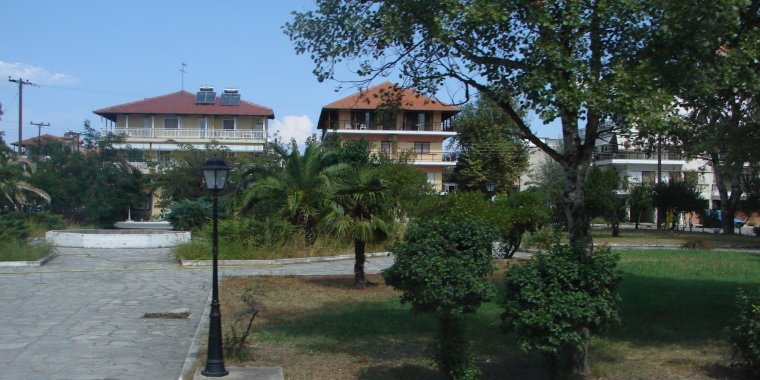
Nei Pori, Greece.
Thursday. We give up staying on beach in exchange for visiting on our own Thessaloniki, the capital of the Greek region of Macedonia and the second-largest city of Greece.
It's morning and the sun didn't rise yet when we arrive at the railway station. A return ticket to Thessaloniki is only 6 Euro. Crossing the lines on the foot bridge, we may take a short picture of the neighborhood.
You may feel the religious life of Greek everywhere: a small church is even inside the Thessaloniki railway station. Checking the afternoon return trains, we buy, with 2 Euro, bus tickets for all day.
We see The Roman Forum of Thessaloniki and next the Saint Dimitrios Church, where are the relics of this patron saint of Thessaloniki. The church underground crypt houses now a museum.
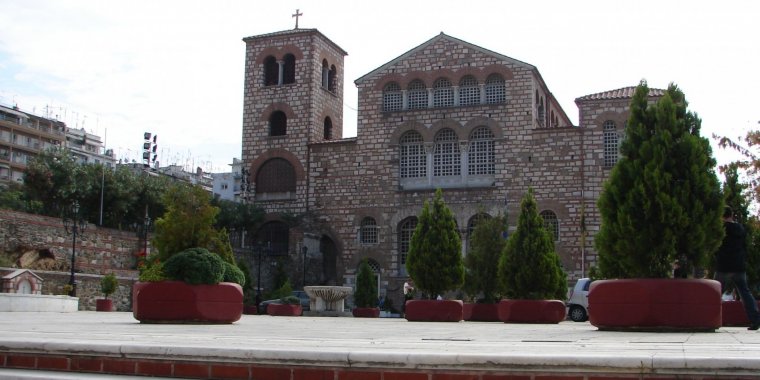
The Church of Saint Dimitrios, Thessaloniki, Greece.
Near The National Bank of Greece, covering several streets, bustle the main square, Aristotelous Square. The vivid merchants are offering a great variety of products. Here, under the eyes of Aristotle's (statue), it's time for the first souvenirs.
I never saw a main road nearer the sea. This road, full of cars and motor cycles, is the only ting between the numerous offsets and the sea. It's a usual panorama the Greeks sitting on the chairs or sofas (ordered on the pavement in front of café), having their meal together and talking.
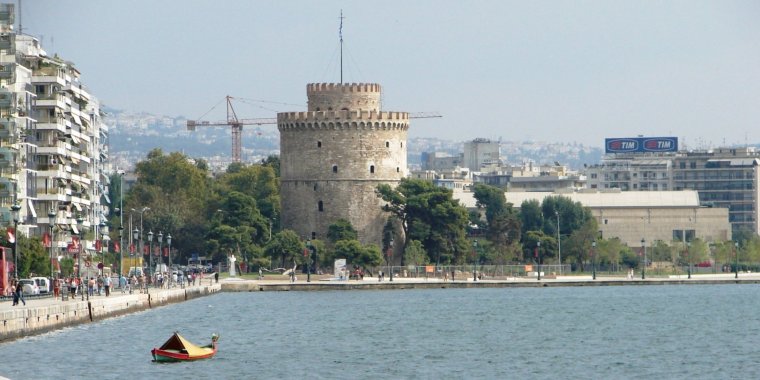
The White Tower, Thessaloniki, Greece.
It's already 3 and a half o'clock in the afternoon when we arrive at The White Tower. We still have time to have a tour with a bus and take a look from above to Thessaloniki.
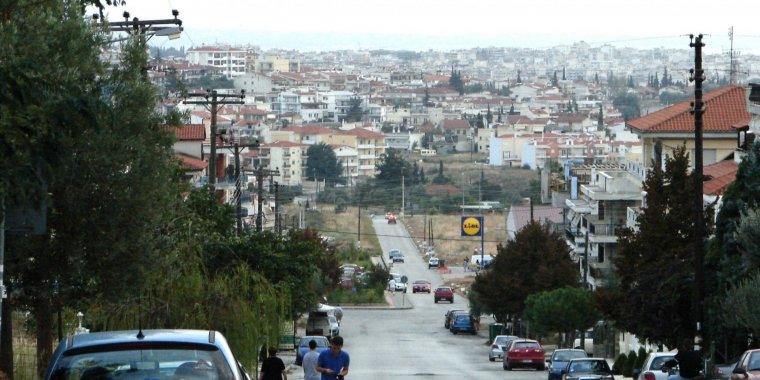
Thessaloniki seen from above, Greece.
The Triumphal Arch of Galerius is the last picture taken before departure of this city.
In the evening, we're back in Nei Pori. It's been a full day, and we are going to sleep well at night.
In fact, we've been so tired that we even missed the next morning beach time, and catched only a short bath in the clear water of The Aegean Sea before the weather's change.
But our group has arranged a greek evening, and so are we going to Kastra, a restaurant with a castle arhitecture and six hundred person capacity.
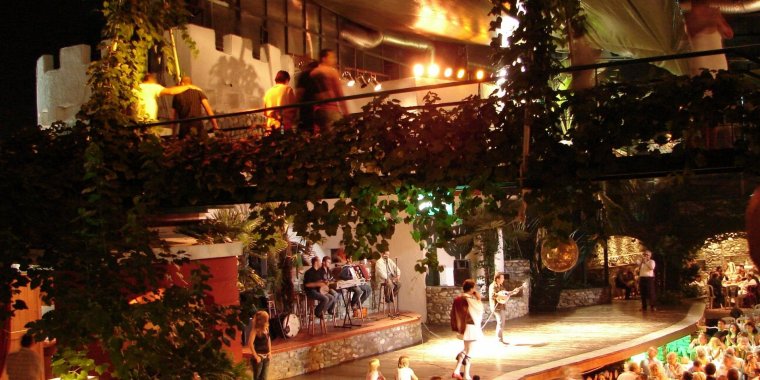
At the Kastra restaurant, Greece.
Greeted with ouzo, we enjoyed the traditional food - tzatziki salad, pork souflaki and orange juice. On the stage, a local dance team entertains the tourists for about three hours.
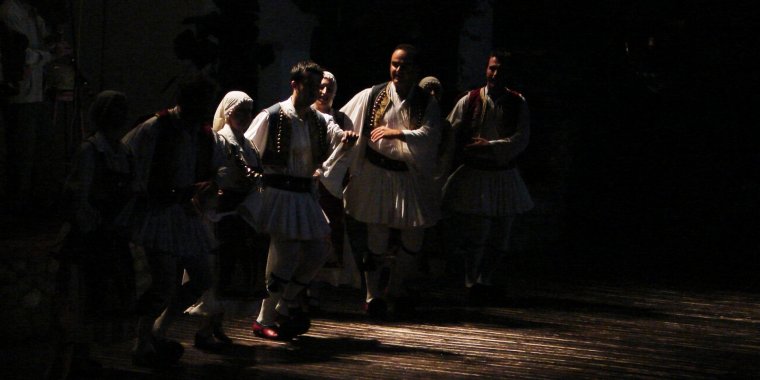
Greek dancers, Kastra restaurant, Greece.
Saturday. There are clouds on the sky so it's not a good time for beach. We decide to take the train to Katerini and, after a city tour, the bus to Paralia, the commercial place of leather clothes.
In the evening, back in Nei Pori, a short sleep is coming to prepare us for the exciting day ahead.
Three nationalities — Polish, Romanian and Serbian — are meeting with their two guides at 1.30 at night, in a local coach, which is going to guide us through Athens.
First halt, around 7 o'clock, in Piraeus seaport. A liner is still waiting for its passengers. Sorry, next time! Its departure is only with five minutes prior to ours.
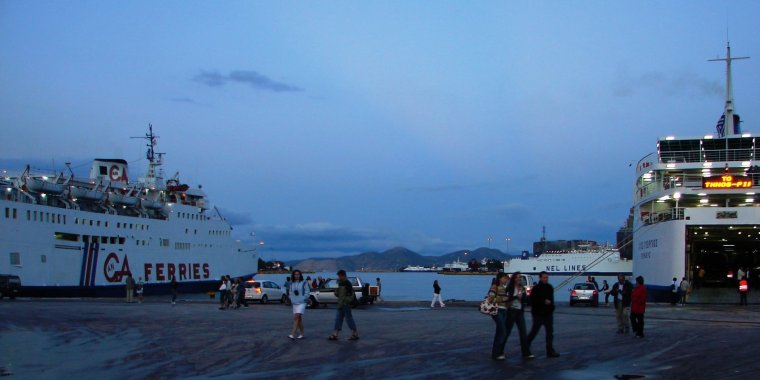
The seaport of Piraeus, Greece.
There is no presence of natives at these morning hours on the narrow streets of Athens. Leaving behind us other two ports, we are heading to the Acropolis.
On the "Sacred Rock", the place of ancient Greek city, history and legend are mixed together.
We can see the olive tree, the deity Athens's present to the natives, with which she gained the competition for city's protectorate, defeating Poseidon.
On the south slope of the Acropolis stretches the religious, artistic and intellectual ancient centre. The theater and sanctuary of Dionyssos, the Stoa of Eumenes, the choragic monuments, the sanctuary of Asklepios, the Odion of Herodes Atticus are the main buildings here.
Certainly, the Greeks know how to take care of their inheritance: they work to preserve the architectural elements of Parthenon and other temples. Their demand for visitors: "don't take photos with human persons near the statues".
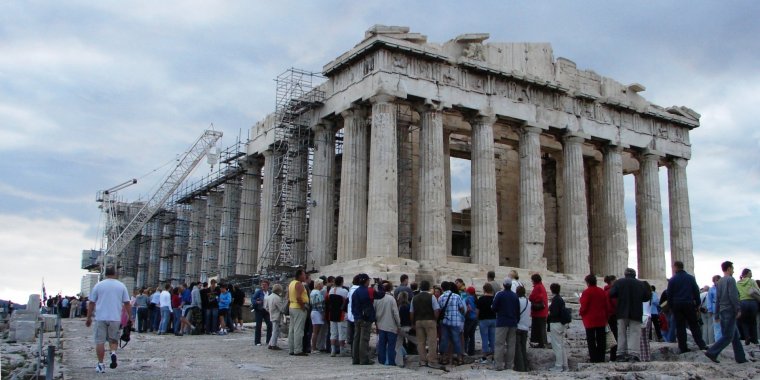
The Parthenon, Athens, Greece.
From here, you can see how Acropolis (meaning "upper city") is watching to the modern city of Athens, which comprised initially the area outside the walled boundaries. The urban agglomeration and the building necessity of lower residences, due to earthquakes possibility, imposed the city to extend its boundaries.
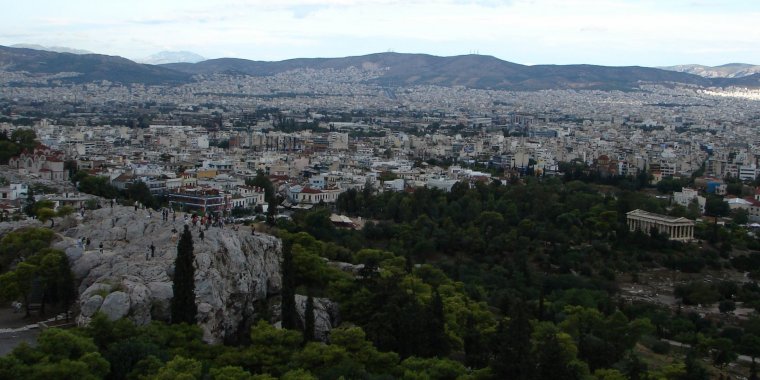
Athens seen from above, Greece.
A short visit into the nine rooms of The Acropolis Museum and, next, the Greek Agora.
More than before, I find my place here, through the images and atmosphere of philosophical debates. It's also the place where democracy was born and I have the feeling that my photo camera is useless — you have to be here to capture everything.
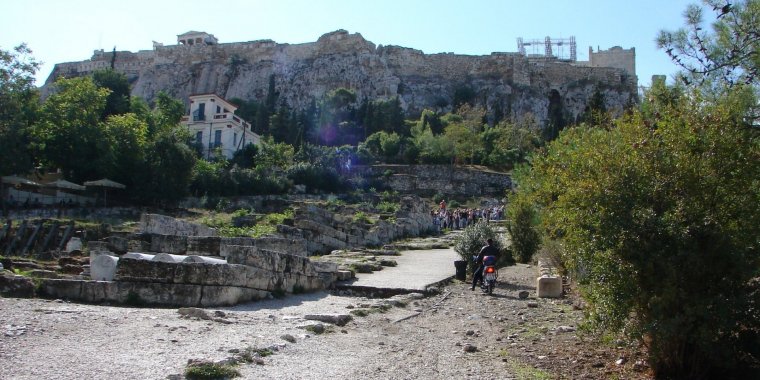
The Greek Agora, Athens, Greece.
The Agora Museum and next Roman Agora and The Tower of the Winds (Aerides).
After some purchases from the market place, Syntagma Square, we are ready to see the guard exchange of the Euzones soldiers.
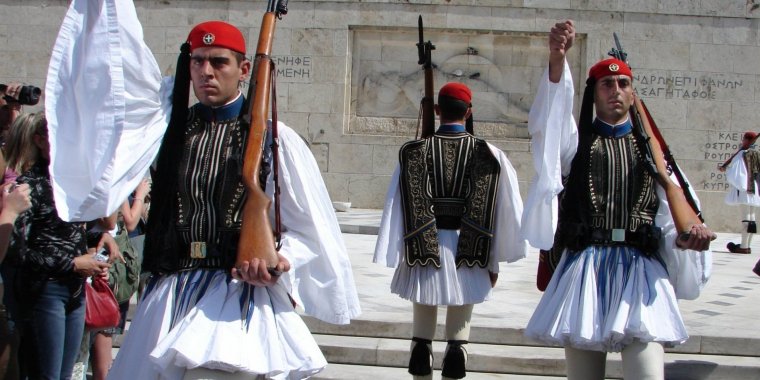
The guard exchange of the Euzones soldiers, Athens, Greece.
In the northern suburb of Athens, the Olympic Stadium is waiting for us to tell stories: from Sparta, the athletics' custom of exercising naked spreads in all ancient Greece to Olympic Games, being subject of the Greek sculpture. Believed to be of sacred nature, the men's bodies even served as models for gods' representation...
It seems that 2004, the year when the Olympic Games returned to their ancient birthplace, has given the city a revival. The strong road infrastructure, designed for this moment, is a good factor for promoting the tourism in Greece.
On our way home (meaning now Nei Pori), the guide is narrating us the Thermopylae battle, and we stop there for a couple of minutes.
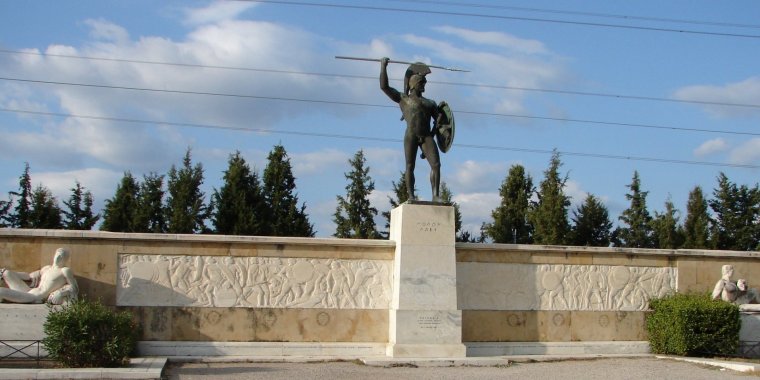
Leonidas Monument, Thermopylae, Greece.
Meteora, the second Greek orthodox center, is our Monday destination.
On a mountain rock, the pious Atanasie Meteorite has given his name to a monastery settlement which he established here. Since then, 24 monasteries were built on the high rock monoliths. Only a part of them are still active today.
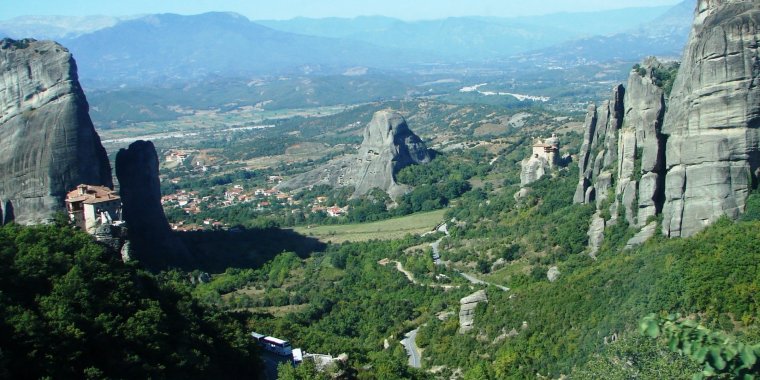
Meteora monasteries, Greece.
After completing our buying at the icon workshop of these "hanging monasteries", we straighten to the biggest of the Meteorite monasteries. The Holy Monastery of Great Meteoron is honored to the "Transfiguration" and the pilgrims arrive there through long passages and stairs build into the mountain rock. Besides the church itself, you can see locations like the tower, the ossuary, the dining room, the pantry and the kitchen, now museums.
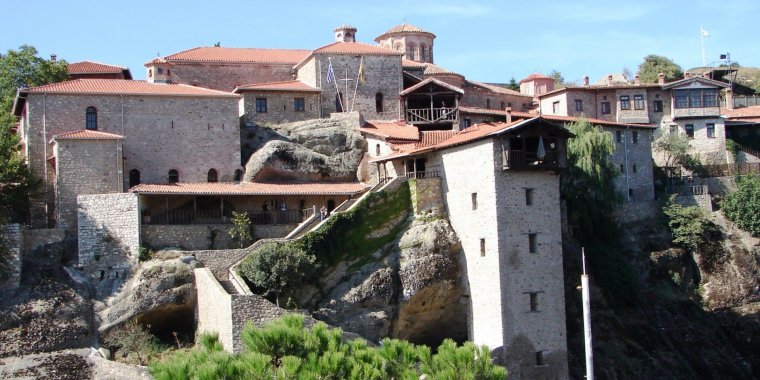
The Great Meteoron Monastery, Greece.
It seems to be only twelve monks living here, although formerly this settlement numbered 120. Maybe too many visitors disturbed the monks' peace and transform the place more into a museum...
Around 14 o'clock the bus draws up in Kalambaka city for the last pictures of Meteora and, two hours later, arrives to Saint Paraschievi Church. The guide says that the foot bridge from here is special: if a couple a lovers crosses this bridge hand in hand, their love will last forever. Nearby the church, a queue of pilgrims has formed to take, through a narrow passage, the holy water...
The last evening in Nei Pori, one last thing to do: a motor run with scooter for about three hours. The Platamona's castle is now enlightened.
Tuesday morning, in our way home, the group makes the last halt in Greece: Thessaloniki.
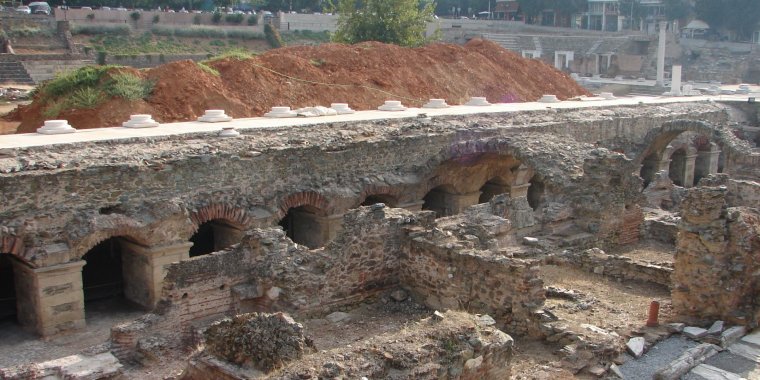
The Roman Forum of Thessaloniki, Greece.
As a good-bye sign, just from the sky, a bird leaves a feather right in my hand, at the Panagia Chalkeon Church.
Good-bye Greece, see you next time!
YOU MAY ALSO LIKE





